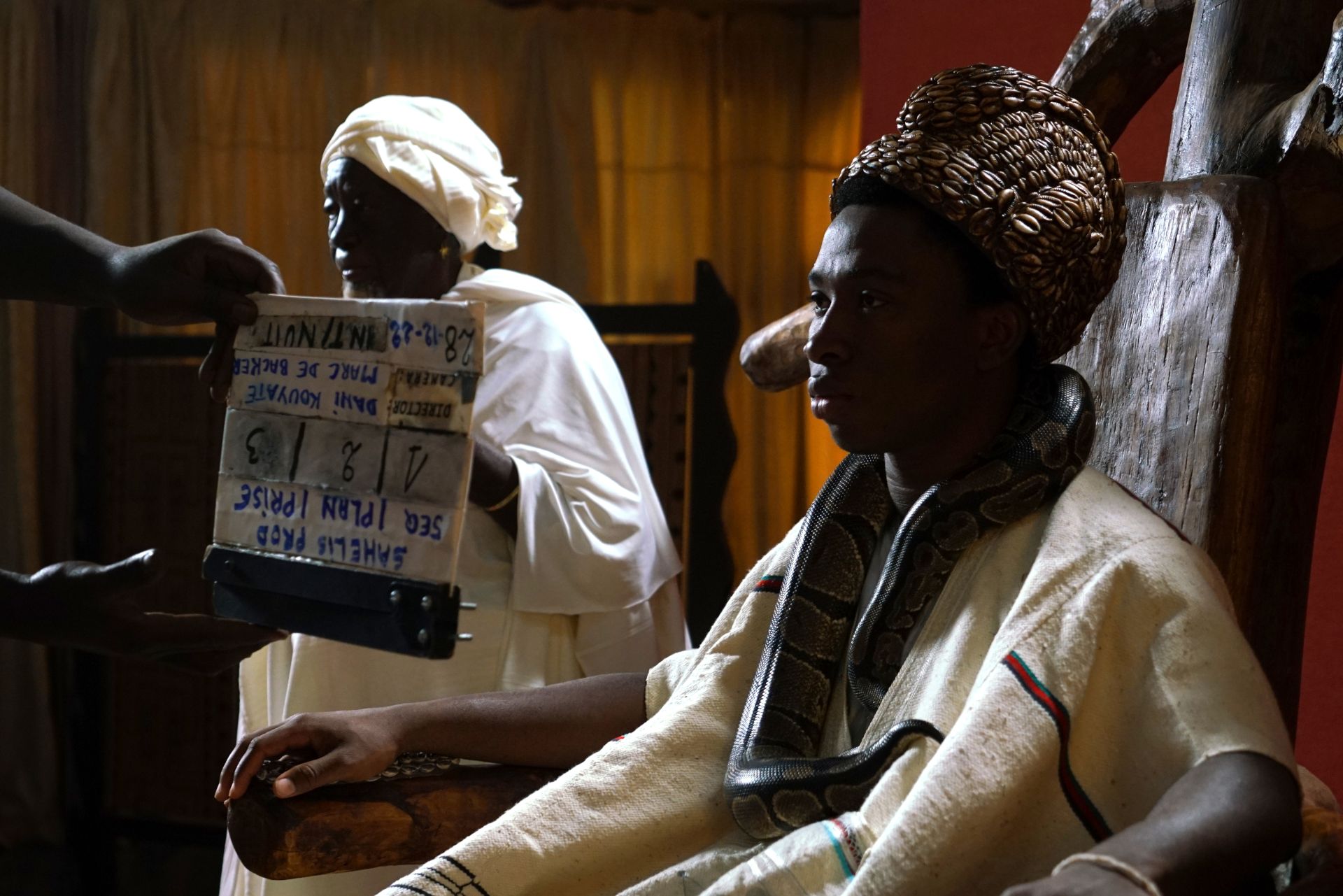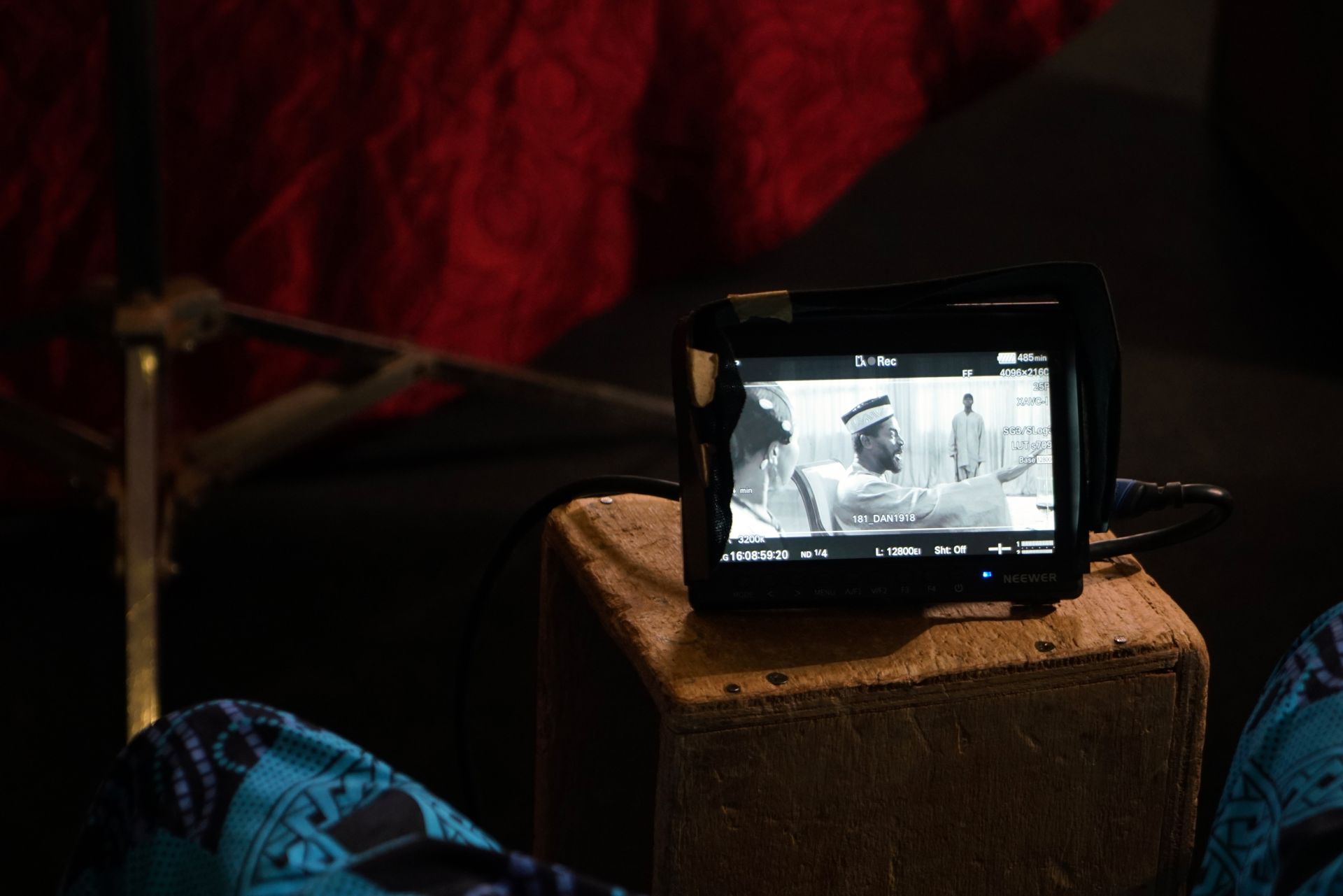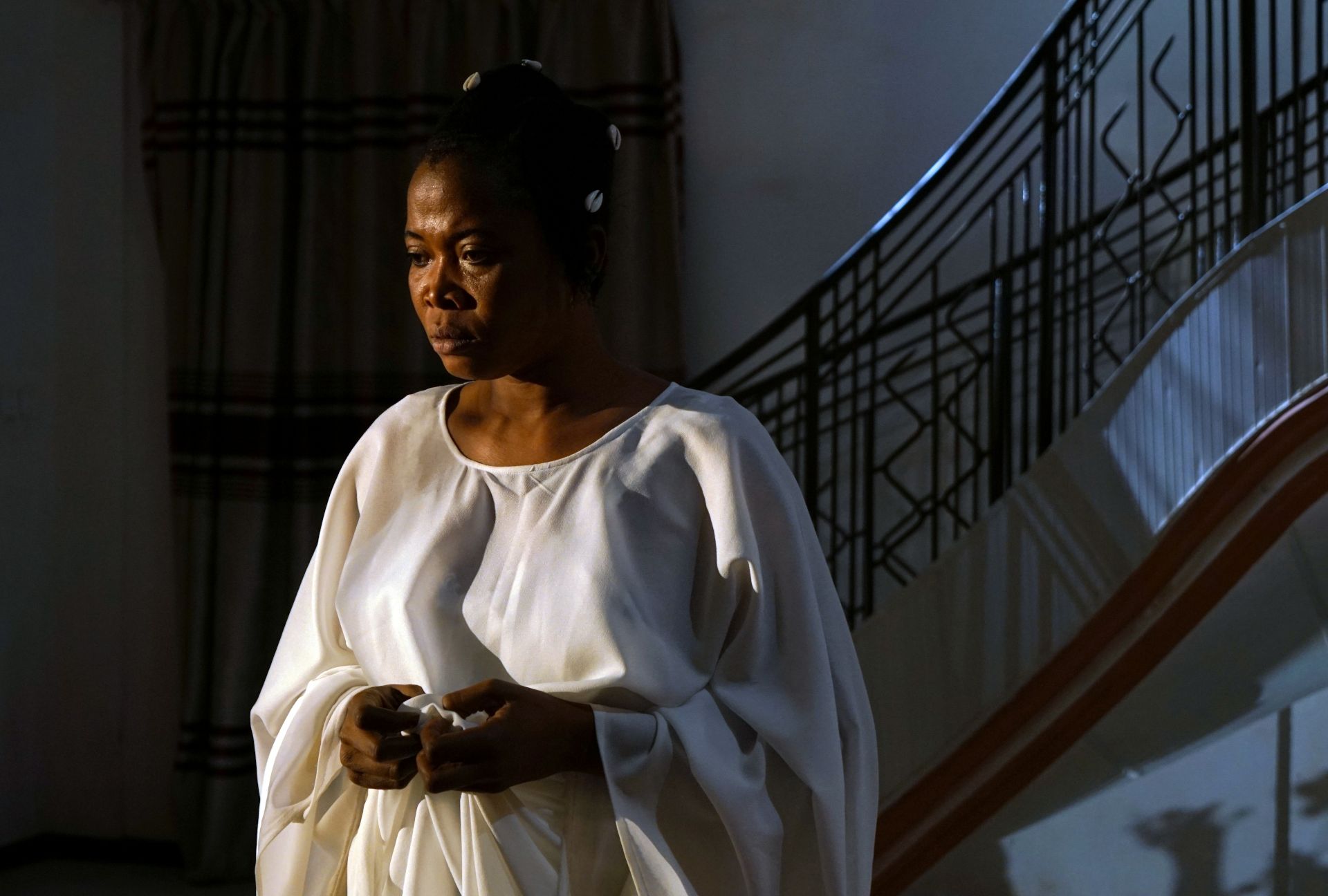The snake refused to slither down the marble staircase and instead disappeared into a crook underneath it. The cameras stopped rolling. The medicine man, to whom the thick serpent belonged, broke into a sweat: It was the final night of shooting on set at a large house on the outskirts of Burkina Faso’s capital Ouagadougou, and the snake needed to perform. A scrum of actors and technicians joined the medicine man in his attempt to extract the animal. Soon it was back on the stairs, the camera operator training his lens on the massive creature. At last, with the shot in the can, the medicine man placed it into a hessian bag, where another serpent lay.
Scorpions, a hippopotamus and unloaded AK-47s on loan from the national army were among the other, deadlier items on the roaming set of “Katanga: The Dance of the Scorpions,” directed by Burkinabe film director Dani Kouyate, an Afro-noir thriller based on Shakespeare’s “Macbeth.” At the end of December 2022, I followed Kouyate and his team as they wrapped up the final weeks of filming.
In a year when Burkina Faso saw two coups, rising terrorist attacks, and mounting civilian and soldier casualties, “Katanga” was one of the few major productions shot in the small but normally bustling Burkinabe film industry. The film will be released later this year and is being submitted for consideration in festivals from Cannes to Venice, as well as Burkina Faso’s own, long-running pan-African film festival, FESPACO.
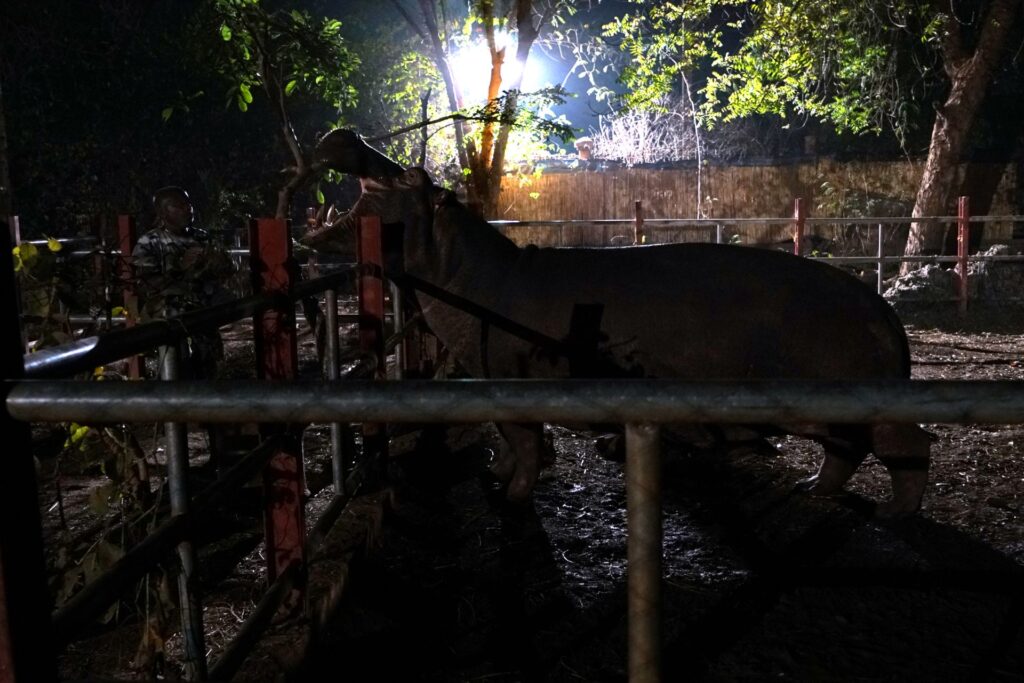
Since 2015, when a jihadist insurgency spilled over from neighboring Mali, security in Burkina Faso has continued to deteriorate with deadly attacks occurring daily, and widespread allegations of abuses perpetrated by the military, volunteer militias and jihadist groups against civilians. In recent years, humanitarian organizations have dubbed Burkina Faso one of the world’s most neglected displacement crises: Around 2 million people have been displaced from their homes, and many face acute food insecurity. The conflict has also taken on deadly ethnic undertones, with those of the Fulani ethnic group being accused of collaborating with jihadists and making up the bulk of those allegedly killed by the military.
I asked Kouyate what impact the crisis had on his filmmaking. He was hesitant to speak about it through the lens of cinema, saying that it felt egotistical to do so. “The problem is beyond the impact on cinema — it is a national tragedy. The nation is on its knees,” he told me. He later added that making a film was a “symbol of resistance,” against those trying to destabilize the country. The crisis had severely restricted where Kouyate and other filmmakers were able to shoot, and for the crew of sound and lighting technicians, set designers and makeup artists who worked on his film and others, employment was becoming even more precarious.
Burkina Faso has, for the past 50 years, been a creative hub for cinephiles and auteurs who create some of the continent’s best arthouse films. Now, as the decade-long jihadist insurrection has upended the nation and threatens to undermine its film industry, directors are confronting those challenges — logistically and thematically — in their work. Less than a year after Kouyate wrapped up filming of “Katanga,” journalists, government critics and human rights activists were being targeted for forcible conscription and thrown onto the front lines by the junta led by Ibrahim Traore — would filmmakers be next?
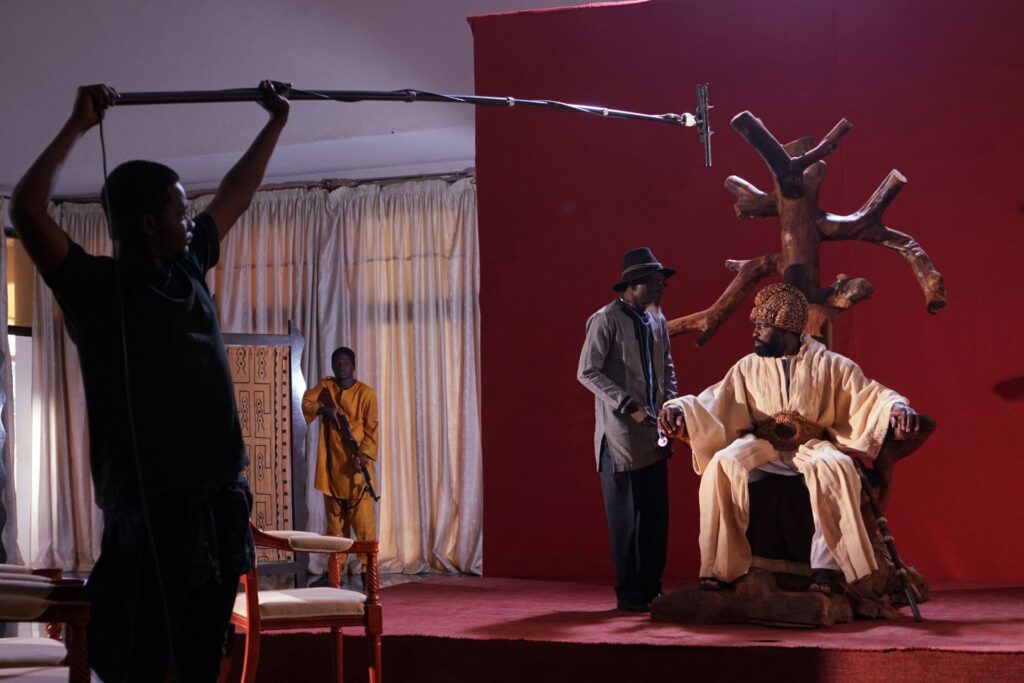
“Katanga” is stylistically bold. Kouyate took a play written by the great English Elizabethan writer and translated it not only linguistically — the actors speak Moore, the language of Burkina Faso’s dominant ethnic group, the Mossi — but culturally as well, situating the story firmly in scenes and interactions that feel distinctly Burkinabe. Inspired by the films of Charlie Chaplin, Kouyate rendered the film in black and white, hoping to give it a timeless quality. Kouyate believes that Shakespeare will resonate with Burkinabes and Africans; he hopes they might not even know that it is a foreign text when they see the film.
“Shakespeare is African,” he said with a laugh. “His spirit is completely African. For me, Shakespeare is always working between the visible and invisible, between the natural and supernatural … with ghosts and spirits — that is a universe that is completely African.”
He believes that such grand texts touch on a humanity that is universal. “Shakespeare speaks a lot about power, for example, and his approach to power in this text is universal. In Africa we have our Macbeths,” he said, referring to dictators of the postcolonial era, like Uganda’s brutal despot Idi Amin and the president-turned-emperor of the Central African Republic, Jean-Bedel Bokassa.
But the poisonous nature of the violence and power in “Macbeth” seems perhaps even more relevant to Burkina Faso today, under Ibrahim Traore’s military leadership. In the months since Kouyate finished filming, multiple coup attempts have allegedly been thwarted and reports of massacres of civilians and disappearances are becoming more common. In January, Russia deployed troops from its recently formed Africa Corps, created from the restructured private military group Wagner, reportedly to protect Ibrahim Traore, which analysts fear might only serve to escalate the violence. I asked Kouyate whether he thought there were any parallels.
“Macbeth is a political allegory about the thirst for power and its effect on human beings. The theme is universal. In that sense, it affects Burkina,” he wrote in a recent email. “But the political situation in Burkina is much more complex. There has been an asymmetrical war imposed by terrorists for over a decade, mixed with complex international realpolitik. The film doesn’t pretend to address this specific problem.”
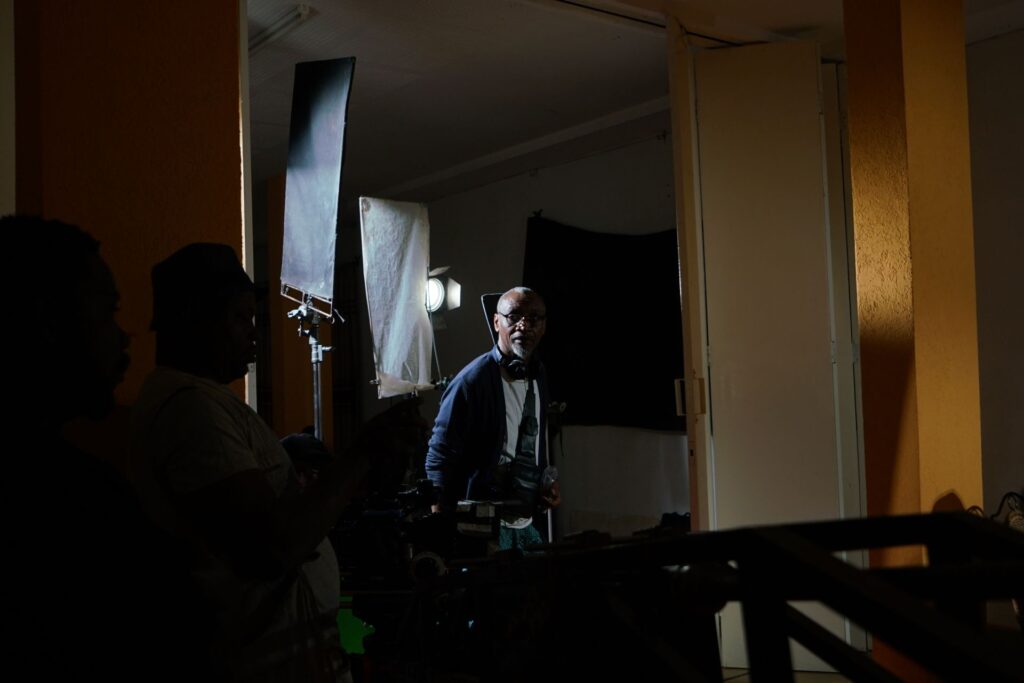
Kouyate said he chose Moore, rather than French, as the film’s language because he wanted to make it accessible to a wide audience in Burkina Faso. He had previously made the film “Keita! The Heritage of the Griot,” a dramatization of an epic poem on the life of Sundiata Keita, the prince who founded the Malian Empire, in Dioula, his own language, shared by many of the same ethnic group living throughout West Africa. Kouyate also hopes one day to make a film in Fulfulde, the language of the Fulani people, many of whom are pastoralists who live in Burkina Faso and countries throughout western and central Africa.
Born into a family of traditional West African performers and singers, known as “griots,” Kouyate pursued theater when his father, the late Sotigui Kouyate, one of Burkina Faso’s best-known actors, decided the tradition had to adapt and modernize. Many griots are not formally educated, but Kouyate went on to pursue filmmaking at the African School of Cinema Education in Ouagadougou, the first film school in West Africa, which was established in the late 1970s with the support of UNESCO, before studying film in Paris.
When Kouyate and his predecessors began their careers, they were shooting on celluloid film and tape that had to be shipped back to Europe for processing and editing. “When I made my first film, we couldn’t make a film without a connection with Europe. It was impossible to make a feature film without passing through a laboratory in Europe for postproduction. We were alienated, not just technically but economically, by Europe, because financing came practically 100% from the neocolonial system, to put it clearly,” Kouyate said.
But in the decades since, the technology has shifted — even if the funding hasn’t. Digital cameras and postproduction on computers mean filmmakers can shoot in new ways and keep their productions largely in-country.
“We are autonomous,” he said. “Today there are many films made in Ouaga that are made from A to Z” without having to rely on labs in Europe, he said.
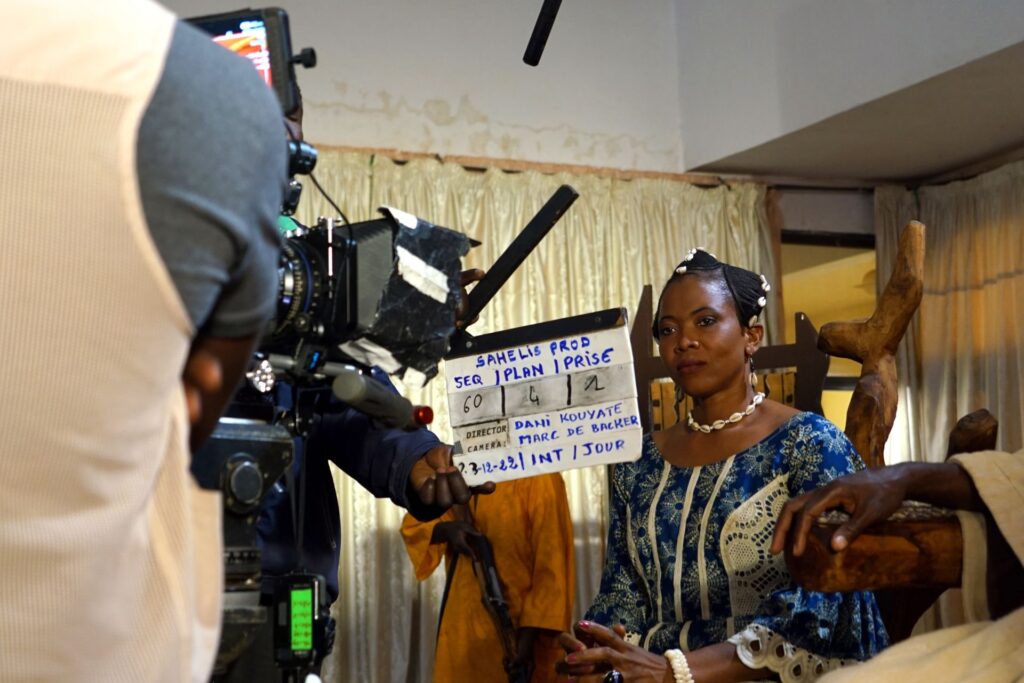
Ouagadougou’s dusty streets — its roundabouts, sculptures and landmarks — are a testament to the nation’s strong historical relationship with cinema and the idea that it ought to play a role in nation-building, social transformation and change. Filmmakers’ Square sits at a major intersection and trails off into a column of bronze statues of the filmmakers who have won the first prize for best fictional feature film at FESPACO, Burkina Faso’s biennial film festival that was founded in 1969 by a diplomat from the French Embassy. It has continued to run throughout the conflict, since the beginning of the jihadist insurgency in 2015 and following deadly attacks on the capital in 2016 and 2018.
Boukary Sawadogo, an associate professor of cinema studies and Black studies at the City University of New York, told New Lines that FESPACO, which was the first of its kind, played an important role in establishing Burkina Faso as a center for African cinema. “It was part of the larger movement of reclaiming independence in concrete terms, of having a say and appropriating one culture and one storytelling,” Sawadogo said. He added that film was seen as a tool for raising political awareness and nation-building among populations with low levels of Western education and literacy.
Thomas Sankara, Burkina Faso’s pan-African Marxist leader, soldier and former president who was assassinated in 1987, brought the festival to new prominence, drawing filmmakers, fans and even celebrated Nigerian singer and musician Fela Kuti to the event. Sankara, who had led what was called “the people’s revolution,” had renamed the nation (which was previously known as Upper Volta) Burkina Faso, meaning “the land of dignified people,” in local languages. The charismatic Sankara saw film as playing an important role in the nation’s efforts to claim back its identity and dignity after colonialism and imperialism.
He also saw cinema as a means through which to advance the role of the revolution, eroding the line between art and propaganda, at least rhetorically. Drawing inspiration from the Soviet Union and former colonial France, his government promoted the creation of mobile cinemas in every district. Cobbled together from the miscellany of everyday life — bed sheets and projectors mounted on the back of trucks — these mobile cinemas brought movies to the masses.
While few films were produced during Sankara’s time, he made the festival more accessible to ordinary people and those from rural areas by providing transport to the events and opening workshops and critique sessions to the public so that people could begin to see themselves as filmmakers and important audiences. There was also an attempt to create a warehouse of pooled collective film stock and equipment to make it easier for filmmakers to produce films, but the initiative wasn’t particularly successful.
“Part of the idea of the revolution was that everything was to come from the people, and the people had to feel like they could participate in everything,” and cinema was no exception, James Genova, author of “Making New People: Politics, Cinema and Liberation in Burkina Faso, 1983-1987,” told New Lines. When Sankara was assassinated, many African filmmakers considered boycotting the festival to protest his brutal killing by his former military allies, including Blaise Compaore, who took over the presidency. But the filmmakers concluded that jeopardizing the festival would have only been another blow, Genova added.
Despite being one of poorest countries in the region and the world, Burkina Faso was also among the first African countries to begin institutionalizing the cinema industry, with the state providing funding for filmmaking and taking money from ticket sales to reinvest in the industry, according to Sawadogo.
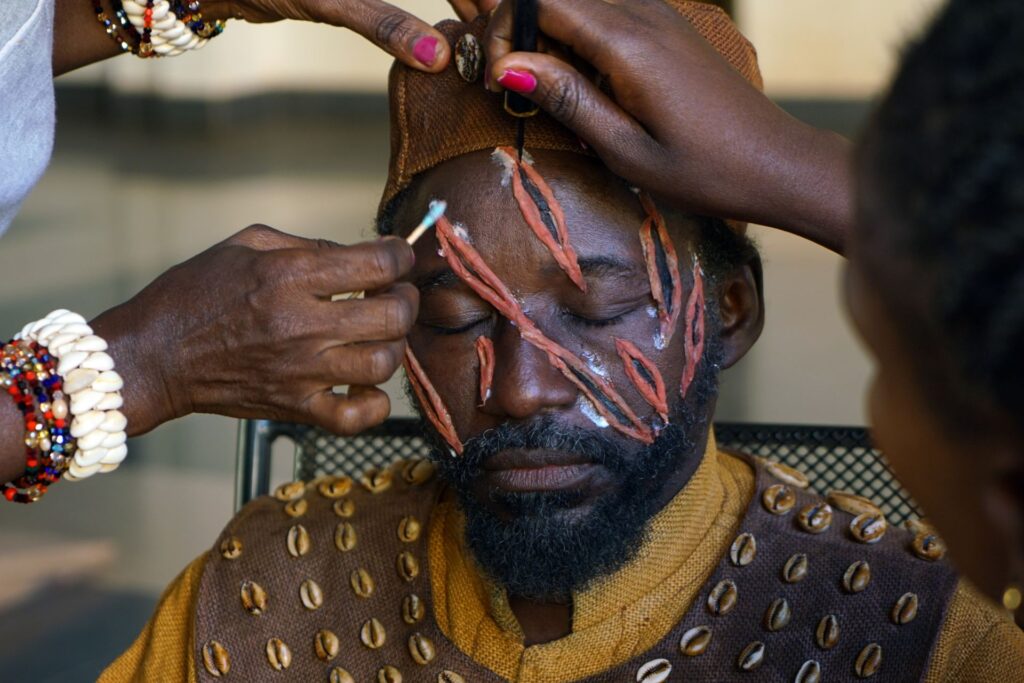
I was introduced to Burkinabe cinema and the filmmaking scene when I was based there as a journalist, between 2020 and 2023, through the African cinema club at the French Institute. It was there that I attended a screening of Gaston Kabore’s acclaimed film “Buud Yaam,” which tells the story of one man’s epic journey to find the medicine that will save his sister after he is accused of sorcery when she falls mysteriously ill. It is the second part of an unfinished trilogy, released in 1997 — the final chapter is yet to be shot.
When Kabore spoke after the screening, he lamented the state of the country and the fact that filmmakers could no longer capture parts of its rich and vast landscape, particularly in the north, which has been overrun by groups affiliated with al Qaeda and the Islamic State group.
A year or so after watching “Buud Yaam,” I enrolled in workshops at Kabore’s film school in Ouagadougou, Institute Imagine, which were being led by members of a new generation of filmmakers, cinematographers, sound and lighting designers, editors and writers. I took short courses in filming and editing with an emerging Burkinabe director of photography named Abdul Aziz Diallo, who lived in neighboring Ivory Coast, and Gaetan Some, who edited documentaries, music videos and feature films.
My classmates were a mix of workers from nongovernmental organizations, students from the Institute of Image and Sound, and others producing community television and radio shows in different parts of the country. Discussions about cinema and the state of the nation unfolded in breaks over croissants and coffee. After a brutal attack in the north, one of my classmates began receiving calls from the phone number of a man he knew had been killed. He showed me the missed calls on his phone and said he wouldn’t pick it up because he was afraid that it might put him at risk. A woman from the east, where jihadists had been gaining ground, lamented how she hadn’t been able to visit her family in the village for over a year.
But though the war was ever present, in those workshops I witnessed the sophistication of Burkina Faso’s cinema scene and the artistic sensibility of those working in it, which belied the simple narratives presented by mainstream media about a desperately poor, landlocked country that was being torn apart by war.
In editing class, we pieced together the clips of short fictional narrative films that focused on the security crisis, which had been made by previous classes. One sequence told the story of a woman who had been an informant for a jihadist group who was approached by a man to give her son up for combat. After her son was killed in battle, the man returned with her son’s amulet and handed her a wad full of cash for compensation, before she wept. There was the somber sequence of a soldier leaving his partner and going off to war, the shadowy shots evoking an image of death. And there was a film about a banana sculpture that a Swiss artist had carved from stone at an annual sculpture symposium in a park not far from Ouagadougou. The banana sculpture film was a reminder of how Burkina Faso had once been a cultural capital in West Africa that drew foreign artists from all over the world. Now, if foreigners came, they could barely travel beyond the capital because of the risk of kidnapping.
Though we also dissected Japanese dramas and discussed the complex queer films produced by Canadian director Xavier Dolan, the undercurrent simmering in the cinematic ether was driven largely by one question: How do Burkinabe filmmakers capture this particular moment — the war, and all the humanity that accompanies it — in their history?
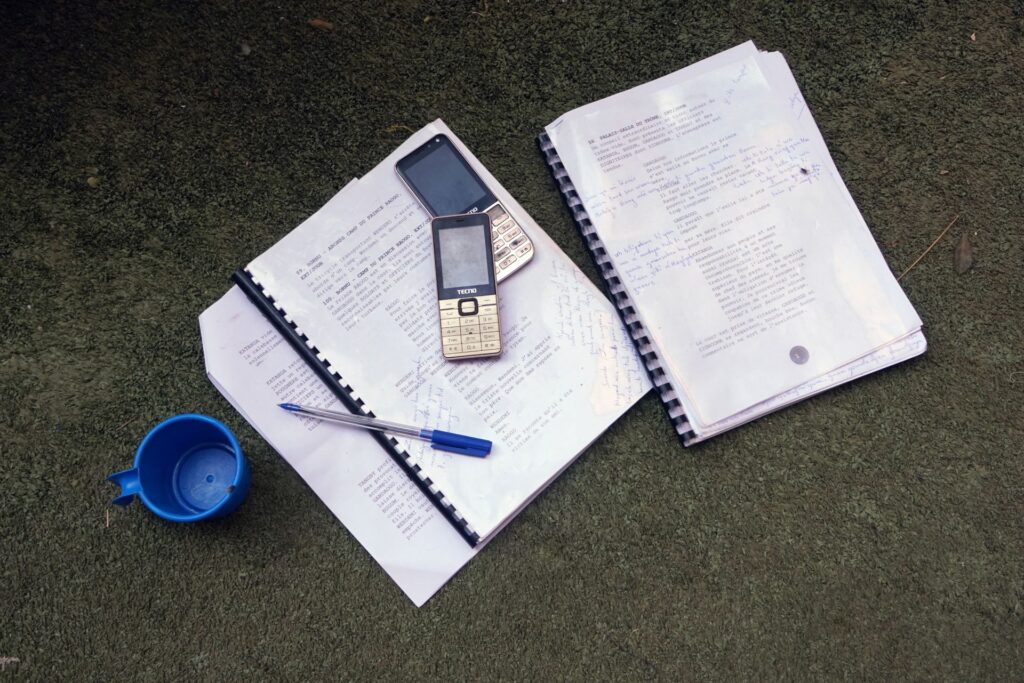
Not long after Kouyate wrapped up the shoot of “Katanga,” preparation for the 2023 edition of FESPACO was underway. Every year the festival runs, Burkina Faso invites an African country as a guest of honor, and Togo had been selected that year. But Togo was soon bumped for Mali, a nation, also ruled by a military junta, whose ties with Burkina Faso had grown stronger in recent months. A week before the festival, French troops had departed from Burkina Faso under the junta’s orders, as they had in Mali months earlier. Speculation as to whether Ibrahim Traore and Mali’s leader Assimi Goita would be present at the festival circulated.
In the lead up to the festival, I had approached directors who were exploring the theme of terrorism in their work. The most prominent of them was Apolline Traore, a Burkinabe director who had attended Emerson College in the United States. Apolline Traore had made a buzzy film called “Sira,” which many saw as a contender for the festival’s top prize in the fictional feature film category. The film, which is set in the desert, had to be shot in Mauritania for security reasons and with the protection of the Mauritanian military, Apolline Traore told me. “Sira” follows the fictional story of a young Fulani woman whose wedding plans are dashed when jihadists attack her community, killing all the men and leaving the women and children displaced. Raped by a jihadist leader and left for dead in the desert, the titular Sira soon discovers she is pregnant. Sira wanders the scorching desert and finds shelter in a cave near a jihadist camp, where she gives birth, before exacting revenge on the insurgents. Soon the Burkinabe army storms in and saves the day. Apolline Traore consulted the Burkinabe military over the accuracy of her script.
On the night of the African premiere of “Sira,” I stood with a colleague in a surging line before we were finally pushed into the theater. Diplomats sat with their bodyguards in the back rows, and ordinary Burkinabes filled the remaining seats and were crammed into the corridors. The audience applauded and cheered at the end. As a journalist who had covered the conflict, the film made me uneasy. Though Apolline Traore’s positioning of a Fulani as a victim of jihadist violence contested the dominant and inaccurate narrative of them all being insurgents, the representation of jihadists as fools and the Burkinabe military as the heroes was overly simplistic. The Hollywood ending to the film felt too tidy for such a devastating and brutal conflict, even in fiction. I, like many of my colleagues, had heard dozens of allegations of extrajudicial killings committed by the military that had been documented by human rights organizations. I also saw the rising fear among sources and the narrowing scope for free speech.

I later asked Sawadogo, the university professor in New York, whether he felt Apolline Traore’s film was pro-military.
“It was a close copy and paste of the reality of what is going on. You have the military fighting the insurgents or jihadists or terrorists … and all of the hopes are pinned on the military to win the battle against the jihadists,” he told me.
Other films produced in Burkina Faso on the theme of terrorism had raised questions about radicalization and military conduct, but would more probing films see the light of day with the junta’s rising repression coupled with earlier laws that had made publishing content that “demoralizes” the military a jailable offense?
On the day the awards were presented for FESPACO, junta leader Ibrahim Traore’s helmeted, masked and armed protection unit took positions in the stadium where the event was held. Ibrahim Traore, dressed in full uniform and wearing a red beret, presented the awards to the winners, as Sankara did decades earlier, during the two festivals in the 1980s that were hosted during his four-year presidency.
Not long after FESPACO concluded, two French journalists were deported from the country after the French newspaper Liberation published an investigation into videos circulating on social media that appeared to show dead children on a military base, with a uniformed man standing before the bodies. One of the children appeared to be alive, before the man picked up a heavy rock and smashed it into the boy’s head.
Later that year, government critics, including a leading Fulani activist, were rounded up and forced to fight on the front lines. Some of the nation’s best investigative journalists were being targeted. Would filmmakers face the same fate as those who questioned the junta? Would anyone dare produce anything critical, even in fiction? And would Burkinabe cinema and its funding be affected by the tensions between France and the Sahel? Sawadogo said there were no signs that filmmakers and funding would suffer from the political fallout. A film technician told me the government hadn’t touched cultural figures yet and they wouldn’t dare do it. A documentary filmmaker with whom I spoke chided civil society members as insincere and untrustworthy and was positive about the possibility of more funding. But questions still remained.
Kouyate himself was optimistic that Burkinabe cinema would be able to withstand the tense political and security climate.
“Cinema is a need,” he said. “It will always exist through thick and thin and will always withstand trials. It has never been easy to make a film here. We are used to the challenges.”
Become a member today to receive access to all our paywalled essays and the best of New Lines delivered to your inbox through our newsletters.



